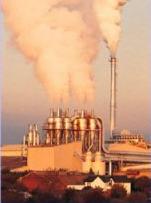
Photo from wikipedia
Abstract Air pollution is currently one of the major environmental risk to human health in the world. Several studies link health to air pollution through the Poisson regression model. However,… Click to show full abstract
Abstract Air pollution is currently one of the major environmental risk to human health in the world. Several studies link health to air pollution through the Poisson regression model. However, this study showed that the best method is the regression model with Negative Binomial distribution. The analysis was made based on daily data for the period between 2010 and 2014 regarding hospitalizations due to circulatory and respiratory diseases, stratified by age due to the concentration of air pollutants: CO, PM10, NO2, SO2 and O3 and meteorological variables. The results with Negative Binomial distribution model indicate, for interquartile range (IQR), that CO is a risk factor (1.00259–1.19688, 95% CI) for circulatory diseases in the elderly (aged over 64) and for respiratory diseases in the population aged 10–19 years old, while NO2 is a risk factor for the population in the range of 20–64 years (1.00313–1.25827, 95% CI) in the city of Araucaria. In Curitiba, air pollutants presenting a risk factor for respiratory diseases were PM10 (RR = 1.05322) in the range of 0–9 years old, CO and O3 (RR = 1.05047) in the range of 20–64 years old, and CO for the elderly. It could be verified that exposure to air pollutants is harmful to health even when their concentrations are below the standards set out in legislation. Additionally, the city of Araucaria presented the highest number of hospital admissions, which may be associated with the large number of industries and lower human development index in the city.
Journal Title: Atmospheric Pollution Research
Year Published: 2017
Link to full text (if available)
Share on Social Media: Sign Up to like & get
recommendations!